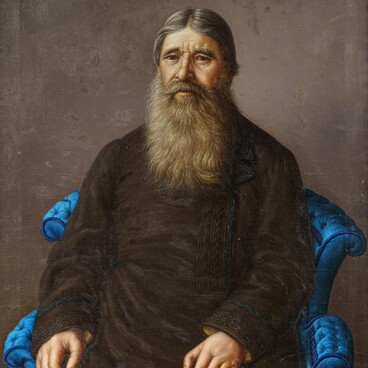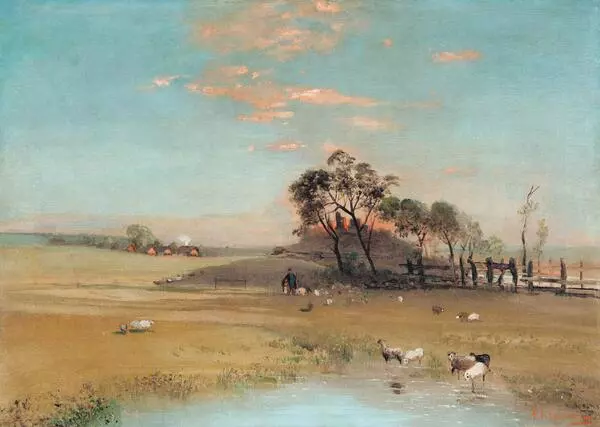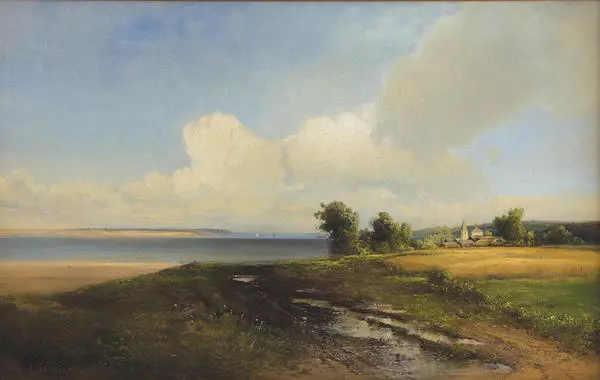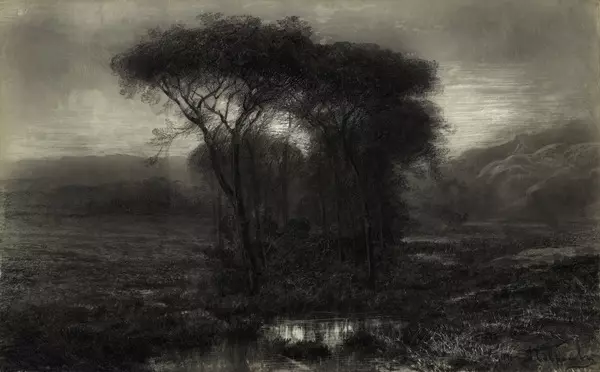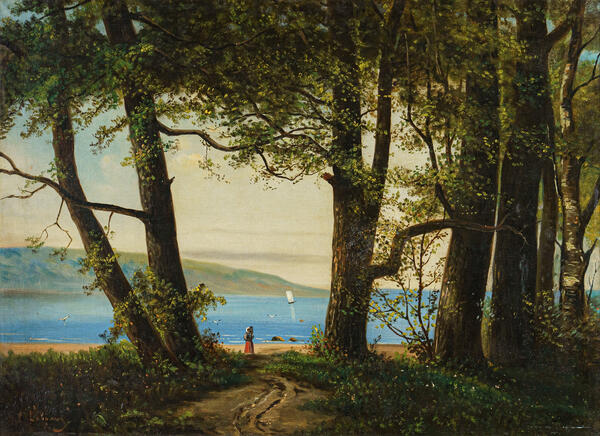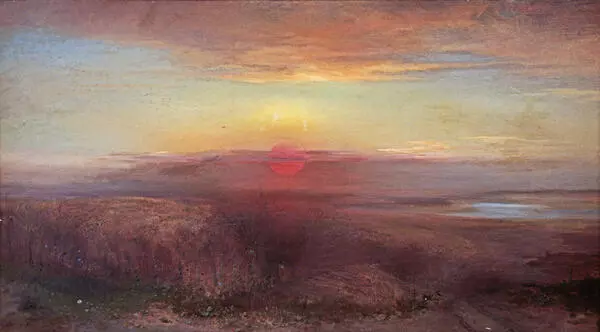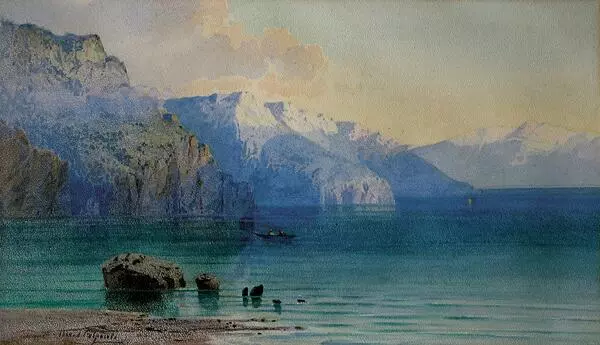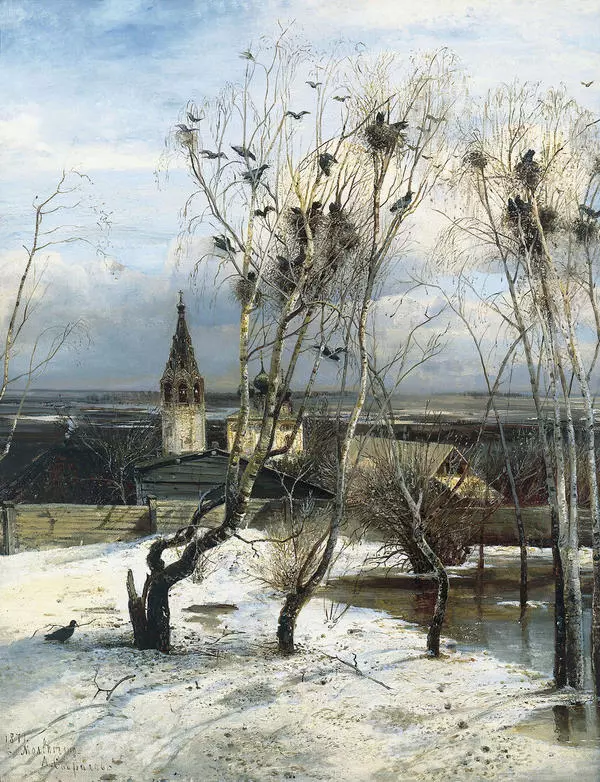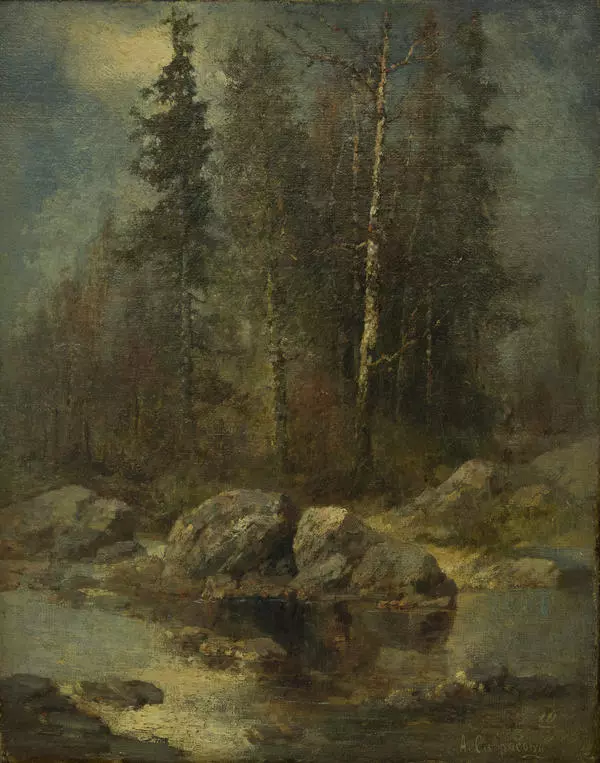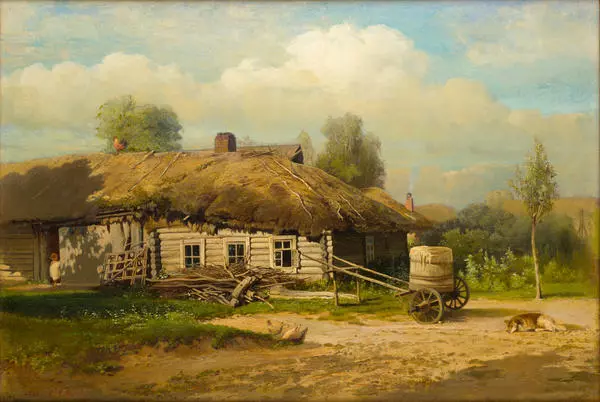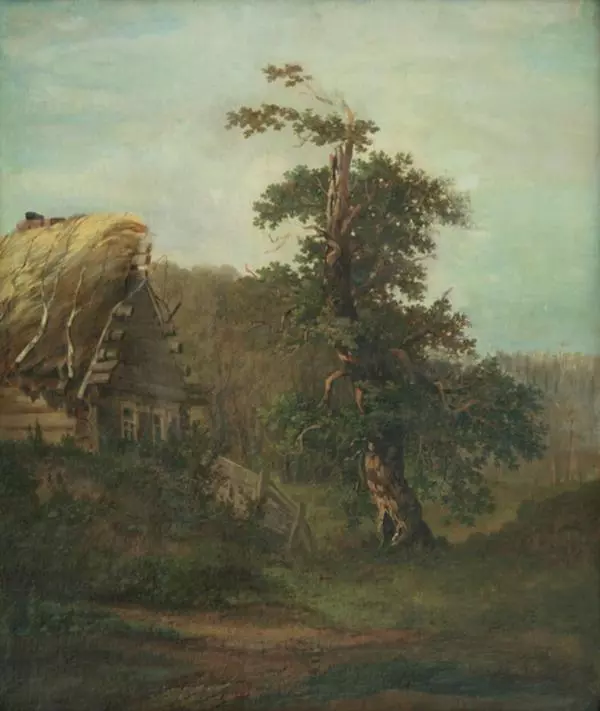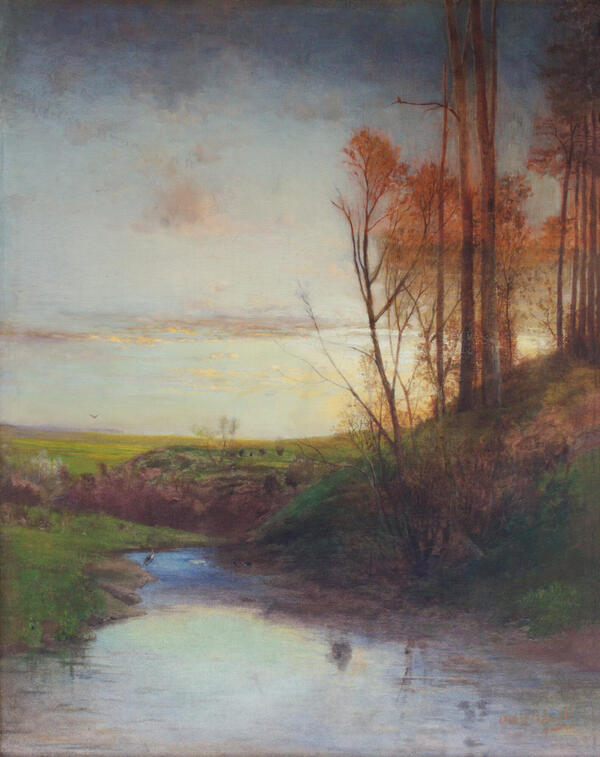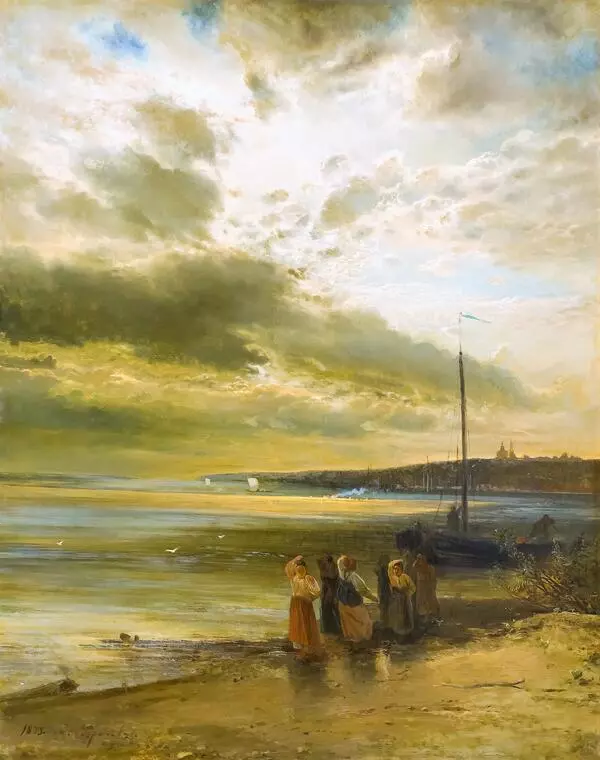Alexey Kondratyevich Savrasov was born into a merchant family in 1830. He became fascinated with drawing when he was still a child. Later, he paid for his studies at the Moscow School of Painting and Sculpture by selling his drawings.
Alexey Savrasov was a successful student and from a young age was expected to become a brilliant artist, with art critics calling him “the hope of Russian art”. He was forced to take a two-year break from his studies due to the illness and death of his mother. Later, Alexey Savrasov resumed his studies, received the title of an artist, and at the age of 24 became the youngest member of the Imperial Academy of Arts. He came back to his alma mater as a professor and headed the landscape class for a quarter of a century. His students included Mikhail Nesterov, Konstantin Korovin, and Isaac Levitan.
Alexey Savrasov secured his place in the history of art with his famous painting “The Rooks Have Returned” and founded the Russian lyrical landscape style. The artist created a poetic and authentic image of Russia. Guided by romantic ideals, earlier artists would usually choose embellished subjects and perfect landscapes. Savrasov strove for verisimilitude and looked for beauty in the seemingly mundane. He depicted views typical of Central Russia — wide open spaces, shabby wooden houses, and the poignant sky. In any landscape, he sought to incorporate touching, deeply personal details. He painted subtly, with warmth and compassion.
Unfortunately, a series of family tragedies struck this intelligent, kind-hearted, and talented man. His four daughters died one after another, and his wife left him. Because of drinking and often being absent from work, Savrasov was dismissed from his position as a professor. He ended up poor and almost blind. He was forced to move out of the state-owned apartment and found himself wandering from shelter to shelter for the rest of his life. He also suffered from a creative crisis. His style changed, and his elegant brush strokes were no longer there, but the talent of the great artist still manifested itself in all of his late paintings.


